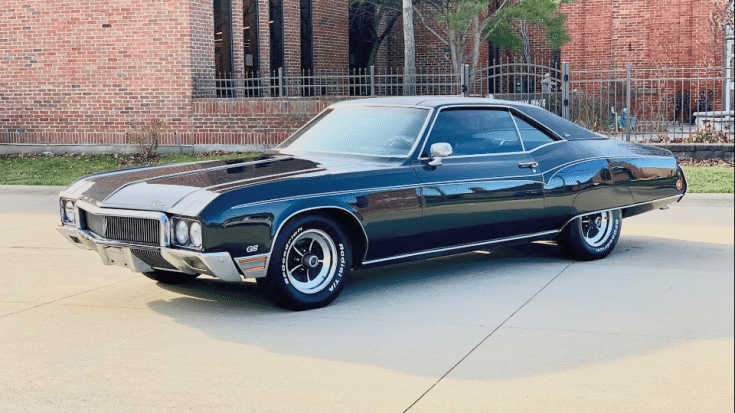10 ’70s Cars That Were More Trouble Than They Were Worth

via ShowdownAuto / YouTube
When it comes to classic cars, everyone love the muscle car – a powerful and stylish type of American cars. Buying classic American cars can be a good choice today. There are many famous car models you can find at good prices because they made so many of them.
But, not every classic car is a good choice. For every popular Ford Mustang, there’s a second-gen Ford Mustang II that might cost too much to keep. So, here’s a list of 10 ’70s Cars That Were More Trouble Than They Were Worth that look cool on posters but might not be great to own.
1978 Dodge Challenger
View this post on Instagram
Introduced in 1978, the second-generation Dodge Challenger didn’t hold up in comparison to other American muscle cars launched at the same time. It earned a reputation as one of the worst Challenger models ever made. Despite the respect garnered by the first-gen Challenger for its overall package and large engine options, the 1978 version fell short with its lack of power and average appearance. Its poor reliability and compromised build quality created maintenance headaches for owners.
This Challenger model came with two engine sizes – a 1.6-liter and a 2.6-liter inline-four. These engines were notorious for delivering weak power and causing multiple problems. One common major issue customers faced was a leaking fuel pump, which led to a nationwide recall of these second-gen Challenger models.
1974 Ford Mustang II Ghia
View this post on Instagram
Following the successful launch of the first-gen Mustang, Ford aimed to release a more luxurious version of this iconic muscle car, hence, the 1974 Ford Mustang II Ghia was born. Unlike its predecessor, this model was equipped with a smaller, more fuel-efficient engine due to the mid-70s oil crisis.
Built on the ill-reputed Pinto platform, the Ford Mustang II Ghia had several issues and was costly to maintain. Plus, with its smaller and less powerful engines, many buyers opted for competitors that boasted both better performance and reliability.
1977 AMC Hornet AMX
View this post on Instagram
After rolling out the Javelin in America, AMC proceeded to create other muscle car models before the oil crisis hit. Hoping to replicate the success of the Javelin, they launched the 1977 Hornet AMX, a muscle car marketed for its aggressive design and sturdy lineage. However, it did not last long, and by 1978, AMC decided to replace it with the more luxurious and well-crafted AMC Concord.
The Hornet AMX, built on the same AMX platform, was burdened with underpowered and unreliable engines. Even the larger 5.0-liter V8 engine, offered as an optional upgrade and touted to pack 120 hp, couldn’t lure performance-hungry buyers. The car’s ownership costs also shot up once owners began experiencing problems with a leaking valve cover gasket and fan belt issues.
1978 Pontiac Grand Prix
View this post on Instagram
The Pontiac Grand Prix, first unveiled in 1975, was known for its broad size and powerful engines. However, following the downsizing trend caused by new emission regulations and the oil crisis, Pontiac introduced a fifth-gen (1978-1987) model featuring smaller, more fuel-friendly engines. Unfortunately, these new engines lacked excitement and performance.
The acclaimed 4.9-liter V8 engine was replaced by a weaker 4.3-liter V8 that boasted just 125 hp and a maximum torque of 210 lb-ft. The optional 5.7-liter Oldsmobile diesel V8, offering only 105 hp and 205 lb-ft of torque, was much worse. These slow and highly unreliable engines were among the worst components of the 1978 Pontiac Grand Prix, with the diesel variant infamous for heating problems, failing head gaskets, faulty head bolts, malfunctioning fuel-injector pumps, and failing crank bearings.
1977 Chevrolet Monza Mirage
View this post on Instagram
Debuting in 1975, the Chevrolet Monza Mirage was marketed as a potent and sporty muscle car. It was heavily based on the Vega and expected to do well with its robust design. In partnership with Michigan Auto Techniques (MAT), Chevrolet launched a more athletic Monza version in 1977, titled the Chevrolet Monza Mirage.
This iteration came with multiple upgrades and a distinct engine – a 5.0-liter V8, which only produced 140 horsepower and failed to live up to the muscle car character. Owing to low demand, production of the Monza Mirage was discontinued the same year, with just 4,057 units manufactured. While it didn’t have specific reliability issues, owners struggled to find replacement parts on the used market, and the resale value was unimpressive.
1975 Chevrolet Camaro
View this post on Instagram
The second-gen Camaro, launched in 1970, featured less powerful powertrain options compared to its predecessor and didn’t meet sales expectations. One of its variants, the 1975 Chevy Camaro, came with a 5.7-liter V8 engine, which delivered a meager 145 hp, later upgraded to 155 hp.
While its poor 0-60 mph acceleration time of 10.5 seconds left a lot to be desired, owners reported other issues such as a lack of replacement parts and high maintenance costs. Despite bearing the Camaro legacy, the 1975 model serves as a prime example of a muscle car that fell short of the mark.
1978 Ford Mustang King Cobra
View this post on Instagram
Labeled as a performance-focused version of the standard Mustang, the 1978 Ford Mustang King Cobra was saddled with an underperforming 4.9-liter Windsor V8 engine, delivering a paltry 142 hp and a disappointing 0-60 mph time exceeding 10 seconds.
Though this Mustang model was generally easy to maintain, it failed to captivate audiences due to its subpar performance and lackluster driving experience. While the Mustang brand name commands a certain level of prestige, there are several better-performing alternatives on the market at similar price points.
1972 AMC Gremlin
View this post on Instagram
Often referred to as the “first American-built import,” the AMC Gremlin symbolizes North American automotive manufacturing in the 1970s. Due to numerous design issues, the Gremlin suffered from several problems, including a faulty suspension system and a poorly designed ignition system that was susceptible to failure due to proximity to the exhaust manifold.
The AMC Gremlin was also plagued by 70s’ rust issues. Despite these flaws, AMC managed to sell an impressive 671,000 units as American consumers were in search of economical alternatives to rising fuel costs. Today, collectors view the Gremlin as an underrated American classic, despite its universally awkward silhouette.
1971 Chevrolet Vega
View this post on Instagram
Possibly the worst vehicle produced by GM to date, the Chevrolet Vega was not only dangerous but also horribly unreliable. Equipped with a hastily-produced inline-four engine, this subcompact faced severe overheating issues, leading to warped cylinders and rendered the engine useless.
Rust problems were rampant, despite Chevrolet’s claims about their rust prevention processes. Also, suspension disintegration and common backfiring problems were reported in two-barrel optioned cars. The car’s rear axle was even known to detach during operation! Despite these issues, the Vega has managed to retain its notorious place in classic American automotive history.
1970 Buick Riviera
View this post on Instagram
From 1966 to 1969, the second-generation Buick Riviera was known for its beautiful design, featuring sleek lines and concealed inboard headlights. Its beauty, however, did not last. With a heavily revised design in 1970, the Riviera’s sales plummeted.
Its new aesthetic was seen as disastrous: a sagging grille, skirted rear fenders growing over the wheels, and a bloated body resembling a drowning victim. The appalling design resulted in a dramatic fall in Riviera sales, only recovering a bit with the scientifically controversial but aesthetically pleasing boat-tail Riviera in 1971.


















